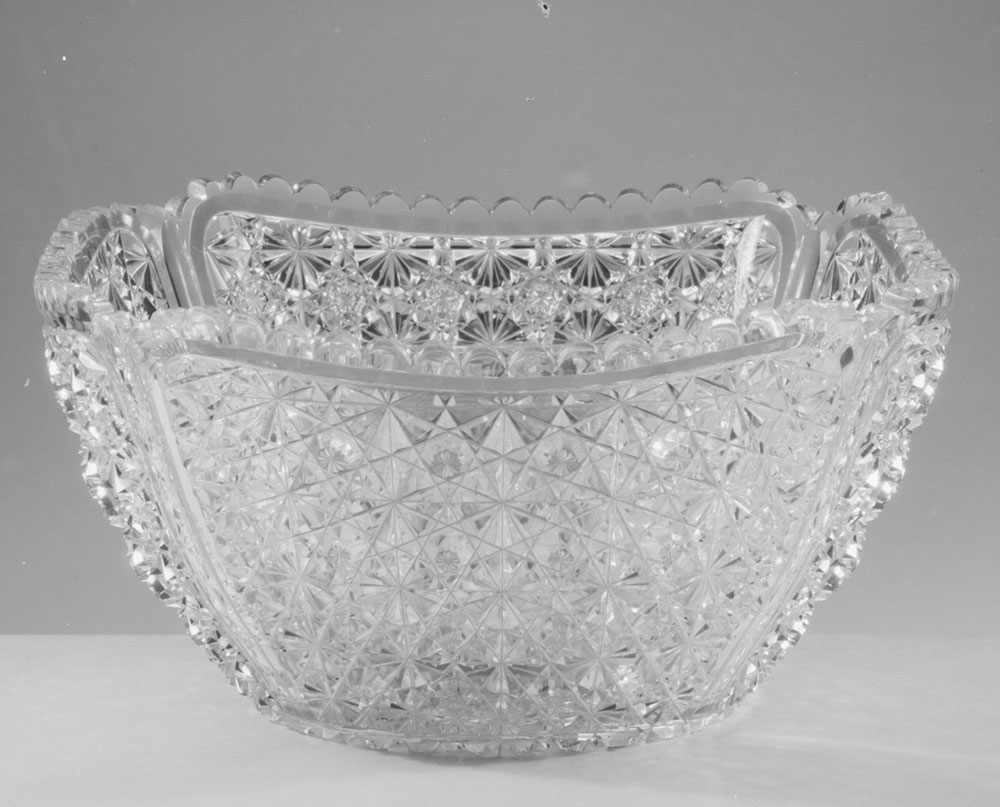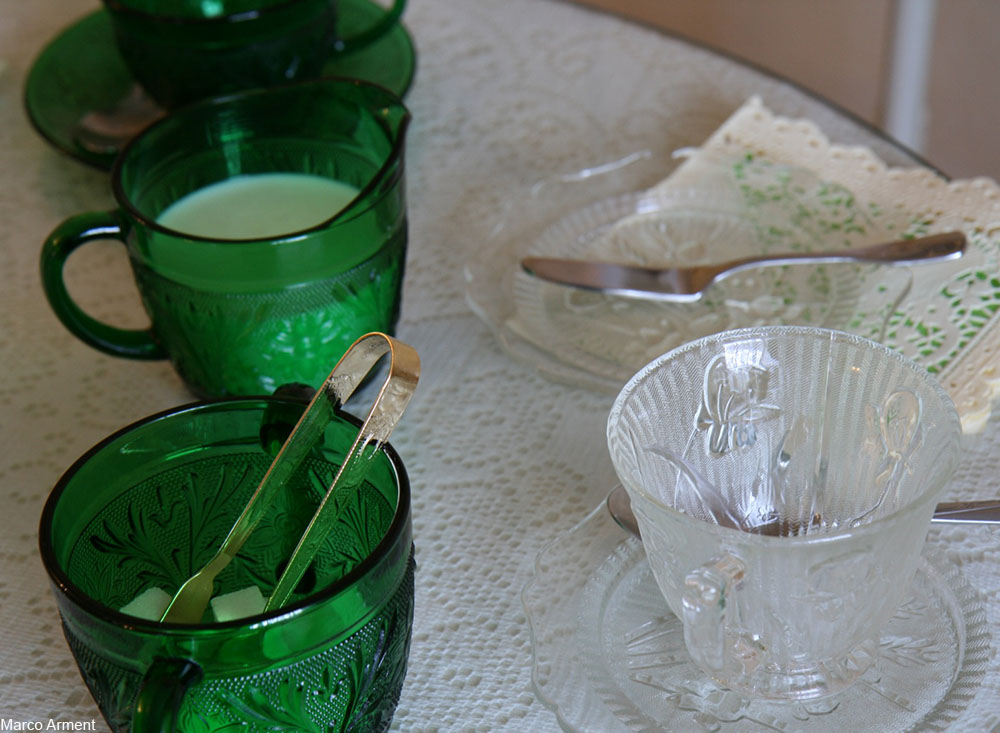Cut glass has always been an expensive commodity because of the skill and time it takes to produce. Today, we have many items of glassware that mimic cut glass, but they are not made the same way at all. During the late 1800s there was a golden age of glass in the U.S. that is still influencing the trends in glassware to this day. So, what makes glass from this period so special? Read on to find out.

Glassware in colonial times was an extremely valuable type of homeware. It was not only expensive to make, but was fragile and hard to ship. This made importation of glass to the colonies of European nations a very laborious and costly endeavor. And, it was in those European countries that glassmaking was truly an art form. Think of Murano glass from Venice, cut crystal from Ireland, or Bohemian glass from Germany- all have been touted as unique and incomparable for centuries.
In the U.S. during the colonial era there were glassmaking operations, but they did not specialize the way that the locations above did. Glass making is an ancient art, but what can be produced with more rudimentary artisans and studios is very different from the fine glassware that the elite had come to appreciate. For this reason, European glassware became the standard of quality, with a bias against humble American glassmakers.

American glassware from the early and mid-1800s is prized by collectors today for the interesting colors and the sheer rarity of undamaged pieces today. But, it wasn’t until nearly the end of the Victorian era that American glassmakers really came into their own.
It was at the 1876 Centennial Exposition in Philadelphia – the first American World’s Fair- that a selection of premium cut glass specimens were placed on public view from 8 different American glassmakers. The display showcased the beautiful designs, at the time more easily shipped than imported glassware thanks to the transcontinental railroad system that had been growing every year since the 1860s.

It was at the Centennial Exposition that recently developed methods for cutting designs in to glass were shown and suddenly American glass was regarded as nearly as desirable as European glass. New patterns with exotic names were created by hand using electrical machines to mesmerizing effect.
The glittering designs sparkled in the light, each cut having been passed over with a series of three processes for getting just the right look. Most American cut glass could not replace certain kinds of crystal, but at a lower price and with a very similar look, the choice for members of the American upper class was clear (no pun intended).

The Philadelphia World’s Fair marked the beginning of the American Brilliant period, a golden age of glassmaking in the U.S. particularly known for the high quality cut glass that was produced during this time.
Between 1876 and around 1910, the cut glass of American factories was held in very high esteem. Notable factories of the period were Dorflinger, J. Hoare and Co., Tuthill, Egginton, Mount Washington, T.G. Hawkes, and Libbey- the latter of which is still a household name today.

By the 1910s much of the cut glass patterns of the era were first molded and then cut, and by the 1930s the process of molding glass to look like cut glass had nearly completely taken over the market. Of course pressed glass doesn’t have the sparkle of true cut glass. But, during this time most people could not afford expensive cut glass items and many pieces of Depression glass or carnival glass were either given as incentive items in products like powdered laundry soap or they were won at carnival games.
The replacement of cut glass with pressed glass was the end of the American Brilliant period, but the vogue for cut glass continues today- or at least the look of cut glass. Patterns of glassware even today are still influenced by the novel patterns and stunning depth of American cut glass from the 1800s.
















